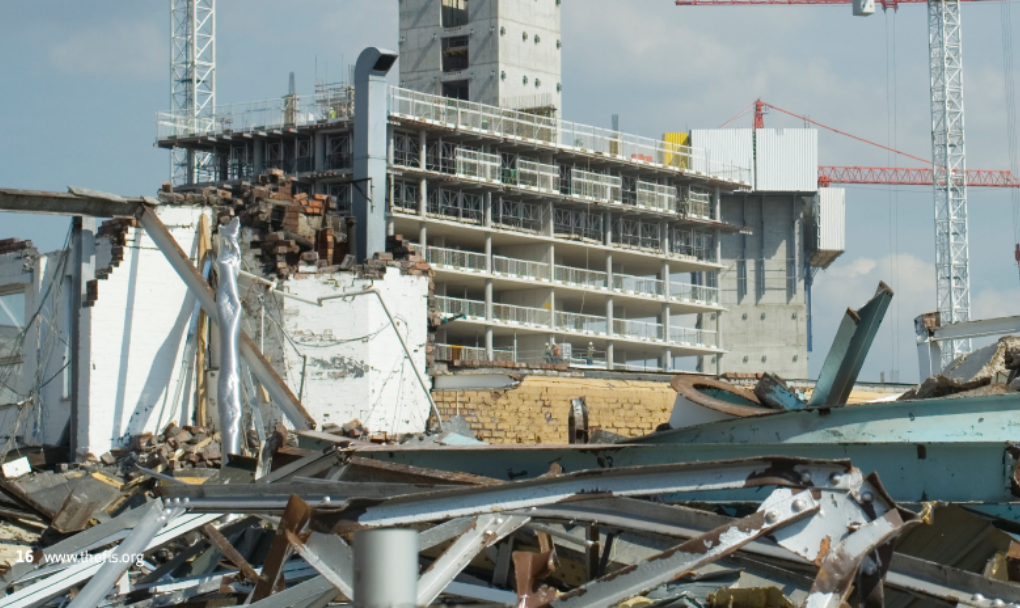Providing around 7% of all UK jobs, the construction industry is huge, but it consumes vast resources. It is responsible for 11% of all greenhouse gas (GHG) emissions, and the operation of buildings amounts to another 40% of the UK GHG total.
DEFRA figures have shown that 30% of all waste produced can be attributed to the construction and demolition industries and another 30% is from excavation waste. While it is estimated that 90% of the waste is recovered, it is often downcycled to produce fill or aggregates – this is the case for heavy materials concrete, brick and asphalt.
The 10% remaining waste adds up to five million tonnes of wastes being sent to landfill.
The fit-out industry alone is thought to be responsible for 300 tonnes of wastes per day. The industry is fast and materials are cheap, it is therefore common practice to over order materials. The surplus materials end up in a skip, often contaminated, making it difficult to recycle or reuse them. In addition, the transition from Cat A to Cat B leads to the generation of waste as materials used for Cat A applications are sometimes taken out of the building before they have been used, as they do not match the requirements of the new tenant. Commercial buildings tend to be refitted on average every five to 10 years, landlords often require tenants to leave the space in the same state they found it before they moved in – this is another significant source of waste.
We explore further the use of material banks and circular design. Continue reading here.


